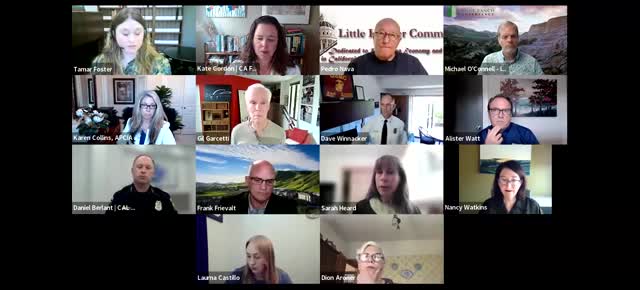Lawmakers push for insurance reforms to tackle wildfire risks
June 07, 2024 | Little Hoover Commission, Other State Agencies, Executive, California

This article was created by AI summarizing key points discussed. AI makes mistakes, so for full details and context, please refer to the video of the full meeting. Please report any errors so we can fix them. Report an error »

In a recent government meeting, discussions centered on the critical intersection of insurance pricing, underwriting decisions, and the importance of mitigation efforts in the face of increasing wildfire risks. The conversation highlighted the regulatory role of the Department of Insurance and the Insurance Commissioner, emphasizing that while pricing is regulated, underwriting decisions—crucial for determining insurance availability—are not.
The Nature Conservancy has sponsored Senate Bill 1060, authored by Senator Becker, which aims to align the underwriting and pricing processes with sustainable insurance strategies. The bill seeks to ensure that mitigation efforts are considered early in the underwriting process, rather than only at the pricing stage. This approach is seen as essential for homeowners to benefit from the incentives tied to mitigation efforts.
Concerns were raised about the current state of mitigation spending, with officials noting that despite significant investments, the impact has been minimal. There is a growing frustration among stakeholders, who fear that without a more integrated approach to underwriting and pricing, the efforts to mitigate wildfire risks may not yield the desired results.
Data shared during the meeting indicated a positive trend in the wildfire preparedness program, with the conversion rate of participants achieving necessary designations rising from 7% to 20% over the past nine months. This increase suggests that more homeowners are beginning to understand and implement the comprehensive mitigation measures required for effective wildfire preparedness.
The meeting concluded with a call for collaboration among state, local, and federal governments, as well as private landowners, to enhance the effectiveness of mitigation strategies and ensure that these efforts are recognized in the insurance underwriting process.
The Nature Conservancy has sponsored Senate Bill 1060, authored by Senator Becker, which aims to align the underwriting and pricing processes with sustainable insurance strategies. The bill seeks to ensure that mitigation efforts are considered early in the underwriting process, rather than only at the pricing stage. This approach is seen as essential for homeowners to benefit from the incentives tied to mitigation efforts.
Concerns were raised about the current state of mitigation spending, with officials noting that despite significant investments, the impact has been minimal. There is a growing frustration among stakeholders, who fear that without a more integrated approach to underwriting and pricing, the efforts to mitigate wildfire risks may not yield the desired results.
Data shared during the meeting indicated a positive trend in the wildfire preparedness program, with the conversion rate of participants achieving necessary designations rising from 7% to 20% over the past nine months. This increase suggests that more homeowners are beginning to understand and implement the comprehensive mitigation measures required for effective wildfire preparedness.
The meeting concluded with a call for collaboration among state, local, and federal governments, as well as private landowners, to enhance the effectiveness of mitigation strategies and ensure that these efforts are recognized in the insurance underwriting process.
View full meeting
This article is based on a recent meeting—watch the full video and explore the complete transcript for deeper insights into the discussion.
View full meeting
